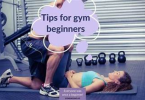So, you’re searching for the best fitness advice for weight loss, and you want something practical, friendly, and easy to follow—not overwhelming, not technical, just real talk. Perfect. Let’s dive into exactly what works, why it works, and also what doesn’t always work so well.
Losing weight isn’t just about eating less or exercising more. It’s about creating the right habits, choosing the right workouts, and treating your body with respect. And trust me—you don’t need to punish yourself to get results.
Let’s break it all down in a detailed, simple, and human way.
1. Choose Movement You Actually Enjoy

Most people fail because they start with a workout routine they hate. And honestly… how long can anyone force themselves to do something they dread?
Why it works
When you enjoy a workout, you’re more consistent. Consistency → habits → results.
Examples
- Walking
- Dancing
- Cycling
- Yoga
- Gym classes
- Swimming
- Home workouts
- HIIT (if you like intensity)
Benefits
- Easy to stick to
- Reduces stress
- Helps build long-term fitness lifestyle
- Less chance of burnout
Drawbacks
- You may not challenge yourself enough if the workout is too easy
- Some fun workouts may burn fewer calories (but consistency still wins)
2. Make Strength Training a Priority
Here’s the most important best fitness advice for weight loss I can ever give:
Build muscle to burn fat.
Strength training (weights or bodyweight exercises) transforms your body faster than almost anything else.
Why it works
Muscle burns more calories than fat—even when you’re not exercising.
So the more muscle you build, the higher your metabolism becomes.
What strength training includes
- Squats
- Lunges
- Push-ups
- Pull-ups
- Deadlifts
- Planks
- Resistance bands
- Dumbbells / barbells
Aim for 2–4 sessions per week.
Benefits
- Speeds up metabolism
- Shapes and tones the body
- Reduces body fat
- Protects joints
- Improves posture
- Helps prevent weight regain
Drawbacks
- Requires learning proper form
- You may need basic equipment (though not always)
- Progress can feel slow at first
3. Walking: The Most Underrated Fat-Burning Tool
If you don’t want to start with intense workouts, start with walking. It’s gentle, effective, and sustainable.
Why it works
Walking helps you burn calories without stressing your body or raising hunger levels (intense cardio often increases appetite).
Goal
Aim for 8,000–10,000 steps per day—but start with what’s realistic.
Benefits
- Low impact
- Easy to begin
- Doesn’t increase hunger
- Lowers stress hormones
- Can be done anywhere
- Perfect for all ages and fitness levels
Drawbacks
- Results may come slowly if walking is your only workout
- Requires time (30–60 minutes daily)
4. Don’t Depend Only on Cardio
Cardio is helpful, but if you rely only on cardio for weight loss, you may hit a plateau quickly.
Why it works (in moderation)
- Burns calories fast
- Strengthens heart and lungs
- Boosts mood via endorphins
Types of cardio
- Running
- Swimming
- Cycling
- Rowing
- Elliptical
- Stair climber
- Brisk walking
Benefits
- Great for overall health
- Burns calories fast
- Improves endurance
- Feels good mentally
Drawbacks
- Only burns calories while you’re doing it
- Doesn’t boost metabolism long-term
- High-intensity cardio increases appetite
- Can cause joint discomfort if overdone
5. Nutrition Will Always Matter More Than You Think
You can work out like an athlete, but if you’re eating poorly, weight loss will still be slow.
So one of the best fitness advice for weight loss has nothing to do with the gym:
Create a balanced, sustainable eating routine. Not a restrictive one.
Simple nutrition rules
- Prioritize protein
- Add more vegetables
- Reduce processed foods
- Limit sugary drinks
- Drink enough water
- Practice mindful eating
- Eat slowly
- Don’t skip meals
Benefits
- Improves hunger control
- Supports muscle building
- Prevents overeating
- Enhances energy and recovery
Drawbacks
- Hard to change old habits
- Requires some planning
- Social eating can make it difficult
6. Track Your Progress the Right Way
Don’t just rely on the scale—it doesn’t reflect fat loss, water changes, or muscle gain.
Better ways to track progress
- Weekly progress photos
- Body measurements
- Fitness improvements (more reps, longer walks)
- Clothing fit
- Energy levels
- Sleep quality
- Overall mood
Benefits
- Gives a more accurate picture
- Helps keep you motivated
- Shows small improvements you might miss
Drawbacks
- Requires patience
- Some weeks you may not see progress visually even though you’re improving internally
You may aslo like to read these posts:
Healthy Food Nutrition Chart Explained: The Ultimate Guide for Smart Eating
Protein and Calorie Facts for Diet: The Ultimate Friendly Guide
Simple Nutrition Facts About Fruits: Your Ultimate Friendly Guide
Understanding Nutrition Labels Easily: Your Complete Guide
7. Rest and Recovery Are Non-Negotiable

Rest isn’t laziness—it’s part of the program.
Why it works
Your muscles, hormones, and metabolism all recover while you sleep.
Rest guidelines
- At least 7–8 hours of sleep
- 1–2 rest days per week
- Light stretching or walking on rest days
Benefits
- Faster muscle recovery
- Higher energy
- Better fat burning
- Reduced cravings
- Fewer injuries
Drawbacks
- Some people feel guilty resting
- Results slow down if you rest “too much” (rare, but possible)
8. Set Realistic Expectations and Be Patient
Weight loss is a marathon, not a sprint. Quick fixes don’t last—but slow progress always does.
Why it works
Realistic goals build confidence instead of frustration.
Better goal setting
Instead of:
“I must lose 20 lbs in a month.”
Try:
“I will move more, eat better, and stay consistent.”
Benefits
- Reduces pressure
- Improves mental health
- Creates long-term habits
- Encourages discipline over perfection
Drawbacks
- Progress may feel slow
- Requires trust in the process
9. Consistency Beats Perfection Every Time
You don’t need to be perfect. You just need to be consistent.
Missed a workout?
Ate a big meal?
Had a bad day?
It’s okay. What matters most is getting back on track.
Why it works
Your long-term habits matter more than occasional slip-ups.
Benefits
- Less stress
- Better long-term results
- Easier to stick with your routine
- Sustainable lifestyle changes
Drawbacks
- Requires patience
- Requires discipline
- Results come gradually, not instantly
Final Thoughts
The best fitness advice for weight loss isn’t a single magic trick—it’s a combination of small, sustainable habits:
- Move your body in ways you enjoy
- Build muscle
- Walk more
- Mix cardio and strength
- Eat balanced meals
- Track progress in multiple ways
- Rest and recover
- Set realistic goals
- Stay consistent
If you follow these steps—even imperfectly—you will lose weight, feel better, and transform your body and mind.
FAQs
1. What is the best type of exercise for weight loss?
The best exercise is a combination of strength training, cardio, and movement you enjoy. Strength training builds muscle to boost metabolism, cardio burns calories, and enjoyable activities make it sustainable.
2. How often should I work out to lose weight?
Aim for 4–6 days per week, mixing strength and cardio. Even 30 minutes a day of consistent activity can produce results if paired with a healthy diet. Remember: rest days are just as important.
3. Can I lose weight by just walking?
Yes! Walking is low-impact, burns calories, and helps control cravings. For best results, aim for 8,000–10,000 steps daily and combine it with strength training and healthy eating.
4. How important is diet in weight loss?
Diet plays a bigger role than exercise in weight loss. Eating balanced, high-protein meals, controlling portion sizes, and reducing processed foods will accelerate fat loss and improve energy levels.
5. How long will it take to see results?
Everyone is different, but typically, noticeable changes appear in 4–8 weeks with consistent exercise and healthy eating. Remember, small changes add up over time.




